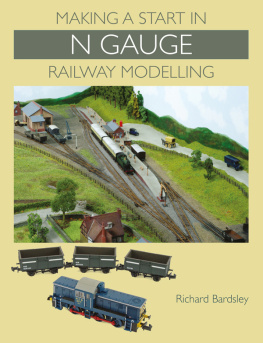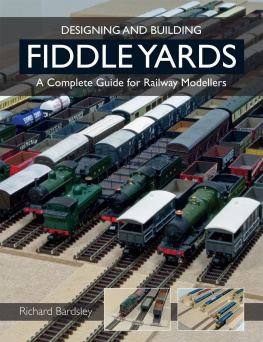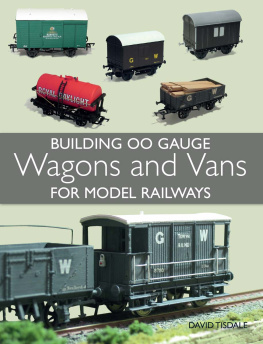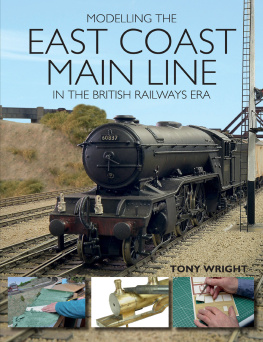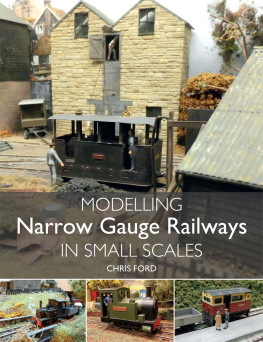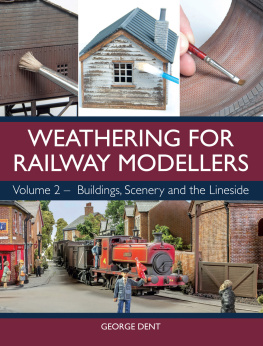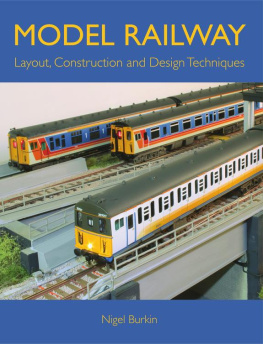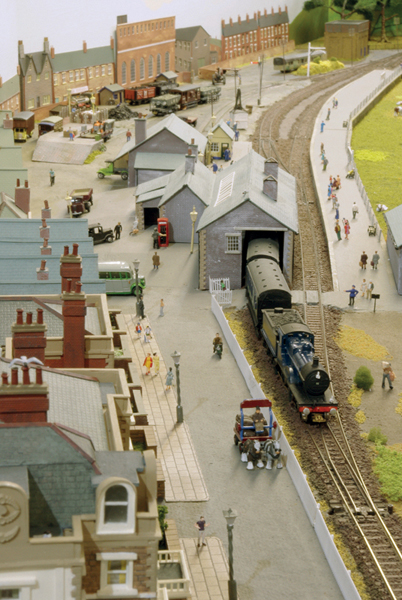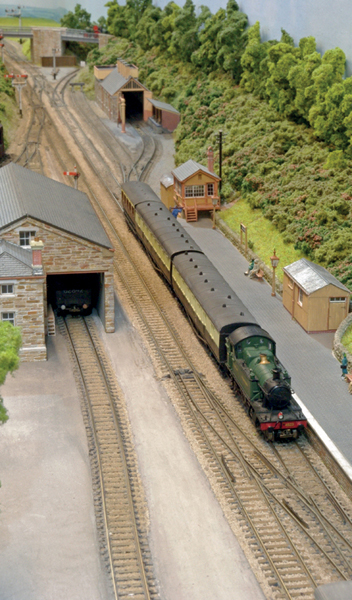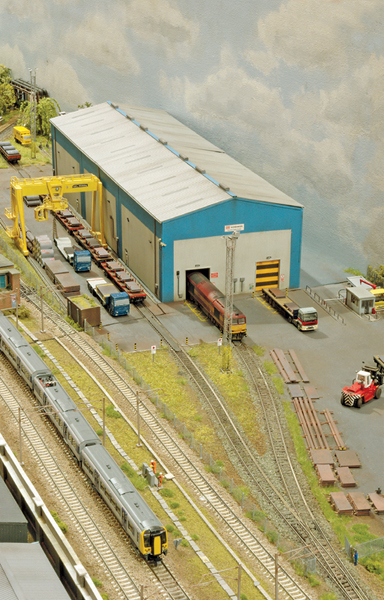MAKING A START IN
RAILWAY MODELLING
Burnham-on-Sea by Alistair Knox represents a bustling seaside resort in the pre-war days of the LMS. There are lots of fascinating little details that bring this scene to life such as people, street lamps, road vehicles and a telephone box.
MAKING A START IN
RAILWAY MODELLING
Richard Bardsley
First published in 2013 by
The Crowood Press Ltd
Ramsbury, Marlborough
Wiltshire SN8 2HR
www.crowood.com
This e-book first published in 2013
Richard Bardsley 2013
All rights reserved. No part of this publication may be reproduced or transmitted in any form or by any means, electronic or mechanical, including photocopy, recording, or any information storage and retrieval system, without permission in writing from the publishers.
British Library Cataloguing-in-Publication Data
A catalogue record for this book is available from the British Library.
ISBN 978 1 84797 650 5
Acknowledgements
Writing this second book was as much fun as the first. Once again, I could not have done it without the help of family and friends. Id like to thank: my wife Sharon Bardsley for further encouragement; my father Stuart Bardsley for more proofing; my mother Margaret Bardsley for buying me my first ever N gauge locomotive; Colin Whalley for lending me items to photograph. For their superb photos, I thank Fred Hempsall (Lincoln and District Model Railway Club) and Grahame Hedges. For letting me photograph their layouts, I thank: Ray Slack; the Northants & Cambs Area Group of the N Gauge Society; John Spence; the Leamington & Warwick Model Railway Society; the Warrington Model Railway Club; Mike Le Marie; the Wyre Forest Model Railway Club; Pete Latham. Finally, thanks are due to the manufacturers large and small for supporting N gauge.
Disclaimer
The author and the publisher do not accept any responsibility in any manner whatsoever for any error or omission, or any loss, damage, injury, adverse outcome, or liability of any kind incurred as a result of the use of any of the information contained in this book, or reliance upon it.
CONTENTS
Melton Mowbray (North) is an exhibition layout by John Spence and Steve Weston that faithfully represents a real place. The additional space that is available in N gauge gives this scene more depth than would be possible in the same space in a larger scale thus enhancing its realism.
INTRODUCTION
If you had a train set when you were young, or perhaps your children had a train set, its almost certain that it was in OO gauge, which has been the most popular commercial scale. Its equally likely that when you put the basic oval of track together, it did not fit on the dining-room table, and you probably ended up on the floor. Despite having fun, how often did you say to yourself, I wish it was a bit smaller? In this book, you will see that the trains are a bit smaller, that they will fit on to the dining table and that you have discovered the marvellous world of N gauge.
There are more reasons for choosing N gauge than just being short of space. While the height and width in N gauge are half the size of OO gauge, the actual area is one-quarter of that required for OO gauge. So if you want to build a layout with sweeping viaducts crossing huge valleys, you will get a much greater visual impact in N gauge. In the real world, the landscape came before the railway; without room to let the scenery breathe, it can simply look like an afterthought. Even the urban environment looks better in N gauge, as you can develop streets, shops and factories. Its all about setting the scene and then setting the railway into the scene. There are many railway modellers with significant areas of space available who still choose N gauge for this reason.
N gauge offers the chance for stunning scenic vistas, while also allowing real places to be modelled, virtually to scale, such as this view of Bodmin in Great Western Railway days as modelled by Ray Slack and Ian Hibbert.
Do not think that by choosing N gauge you have in some way compromised your desire to build a realistic model railway by choosing a smaller scale. The opposite is true you have made a deliberate decision to choose a modelling scale that best suits what you want to achieve. Many modellers in larger scales have to compromise in terms of the length of their trains. A full-length, main-line express train will often be ten coaches; the larger the scale, the more of those carriages you have to surrender to fit it on to your layout. In a modest-sized room for your layout, N gauge will let you have the whole train without any compromises.
It is now possible to achieve a stunning level of realism when modelling in N gauge thanks to the quality of the models available and the space to let them become part of a landscape. This fact is superbly illustrated on Horseley Fields by the Northants & Cambs Area Group of the N Gauge Society.
If you are new to the model railway hobby, or just to N gauge itself, you may not know where to begin. There are lots of questions, and without easily understood answers, you may be unsure about how to get going. Building a rewarding N gauge model railway is just a series of bite-sized steps performed in a logical manner. The starting point is a bit of design where will you put your model railway, what type of layout will you build and which prototype will you choose? When you know what you want, you can draw a track plan that is a blueprint for the layout you are going to build. Construction itself starts with the foundation of baseboards. Then the excitement really starts as you are ready to lay and ballast the track. Once this is done, you can add wiring and controls, and you can actually play trains.
To run some trains you will need rolling stock, and with this you will need to choose a coupling system for the way in which you will operate the layout. Once everything is working, you can construct the layouts scenic setting, starting with the immediate railway infrastructure, such as stations, and then the wider scenery of fields and hills or houses and factories. Finally, you can add the many little details that really bring a layout to life.

